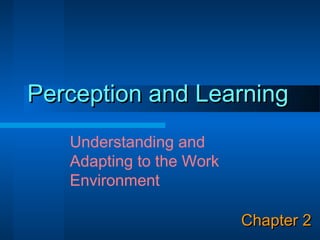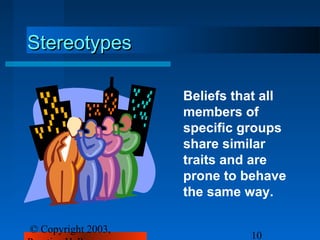This chapter discusses social perception and learning in organizational contexts. It defines key concepts like social identity theory, attribution processes, and biases that influence social perception. It also explains principles of learning like operant conditioning and different reinforcement schedules that shape behaviors in work environments. The goal is to understand how social perception and learning principles apply to performance appraisals, interviews, developing corporate images, and designing effective training programs.











































